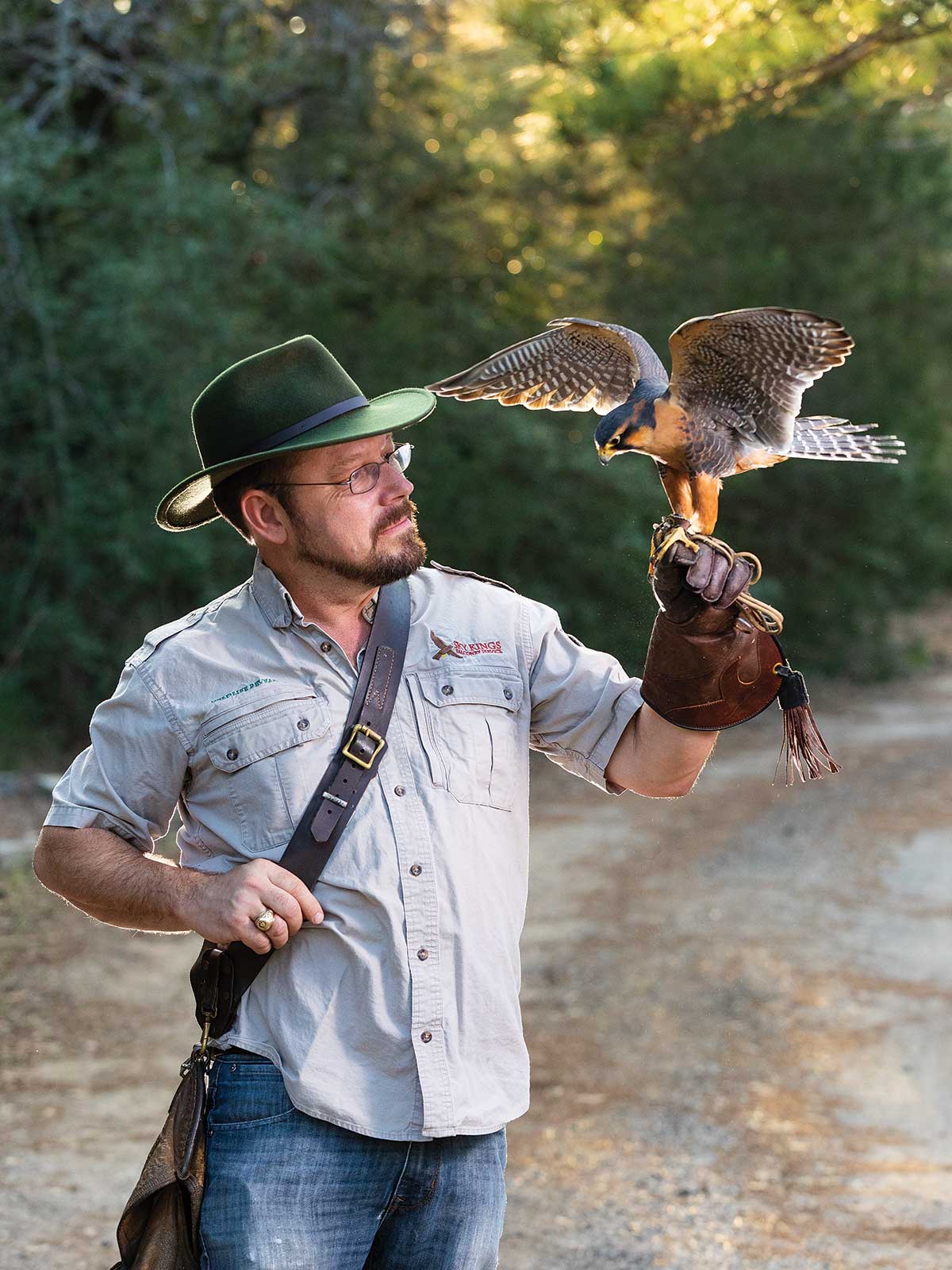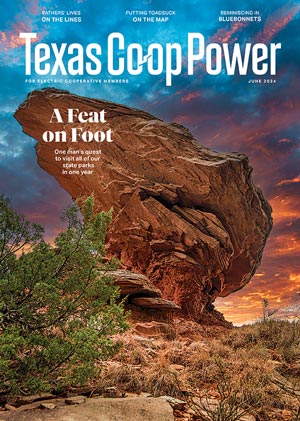Victor Lawrence asks the kookaburra perched on his fist why the vulture crossed the road.
“Because the chicken didn’t make it!” he says. The corny joke makes the Australian bird erupt in its unmistakable raucous laugh, which triggers roars of laughter from the audience at the Rio Grande Valley Birding Festival in Harlingen.
The kookaburra is one of 33 birds of prey that live and work with the nonprofit Wildlife Revealed, traveling across Texas and the U.S. as ambassadors of the bird kingdom. Lawrence, who is a falconer, and his colleagues at Wildlife Revealed act as interpreters, letting audiences observe the birds’ talents, intelligence and quirks. The presentations educate audiences on the importance of wild birds and why they need protection for their important roles in global ecosystems.
Each bird is different. Some birds demonstrate their flight abilities. Cyrene, the Eurasian eagle-owl, is quiet as a shadow. Some, like Pierre, the crested caracara, simply look handsome. While Obee, a white-necked raven, snatches proffered dollar bills and hides them away, Grimley, a black vulture, waddle-hops around the Harlingen audience, looking for food in all the wrong places.
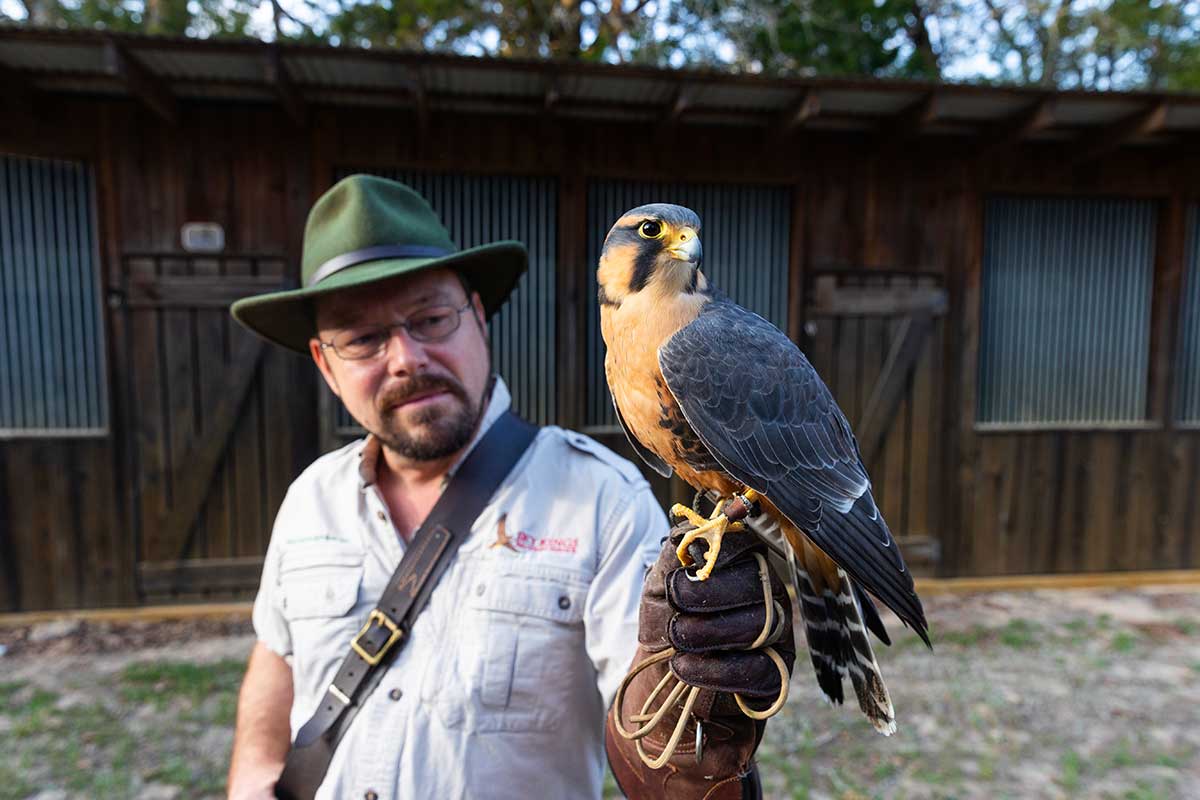
Gaines and Vegas. Gaines started Wildlife Revealed in 2007.
Erich Schlegel
A catlike “mrrrow” comes from Cyrene. Massive and regal, with a wingspan around 5 feet, the captive-bred owl looks like it could swallow a small cat. Onlookers guess that she weighs 25–75 pounds, but she’s just 5 pounds.
Raptors—such as owls, falcons, hawks—capture and kill their food thanks to incredible eyesight, hooked beaks, and strong feet and talons. Lawrence considers birds of prey a broader category that includes all carnivorous birds from kingfishers like the kookaburra to pelicans, vultures, ravens and crows.
The roots of Wildlife Revealed, based near Bastrop, east of Austin, reach back 35 years. On a Cub Scout trip to the Houston Zoo in the 1980s, young Kevin Gaines stood just feet away from a red-tailed hawk on a zookeeper’s arm. “I thought it was the coolest thing in the world,” he recalls.
While earning an engineering degree at Texas A&M University, Gaines volunteered in bird rehabilitation. He learned about injuries and rehab, diet, training, flight, and presentation while working with educational bird programs. He became a permitted falconer, and when the opportunity arose to give a school presentation, he showed up with three of his own birds. By 2007, Gaines had established Wildlife Revealed, which is funded by donations and performance fees.
“By making it memorable with live birds, they will remember why vultures are important to the environment,” he says. “And when people see a falcon dive across an audience, they are blown away.”
The falcons, along with other birds of prey, perform at Renaissance festivals and at hundreds of schools, birding and wildlife festivals, museums, and special events.
“This is something you do for the love of the job, not the money,” says Gaines, a member of Bluebonnet Electric Cooperative. “It’s a challenge but super fun.” He directs three teams of falconers, assistants and volunteers.
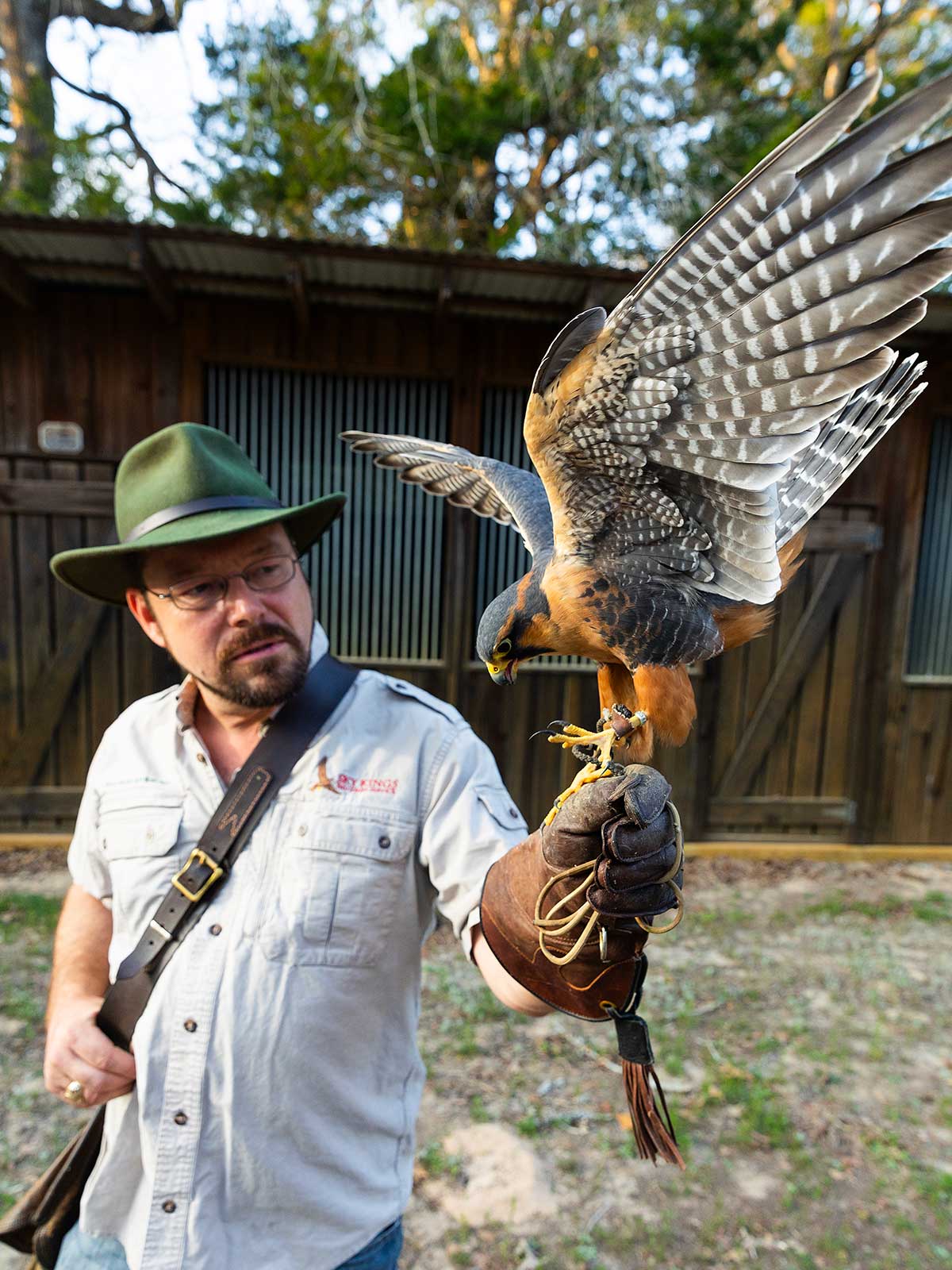
“When people see a falcon dive across an audience, they are blown away,” Gaines says.
Erich Schlegel
Working a few hours a day, the avian ambassadors earn their keep. Their keep isn’t cheap. A shipment of frozen mice that lasts 2–3 months costs $1,600. Birds of prey need to eat the whole mouse or rat to get a nutritionally complete diet.
About half of Gaines’ birds come from animal rescue and rehab centers and can’t be released into the wild. Pierre the caracara, for example, can’t fly after a collision with a car. The rest of the birds, exotics like kookaburras and eagle-owls, come from licensed captive breeding programs.
Training and forming a bond with a bird can take from six weeks to a year and is an ongoing process. “It depends on the bird’s personality, too,” Gaines says. “Owls are hard to train. They are very distractible. Harris’ hawks are quick learners. Caracaras are smart but resistant to complying.”
Lawrence admits the ravens and similar birds such as crows and magpies have his full attention and admiration for their intelligence.
“If Obee gets loose, the next thing on his agenda is world domination,” he says. It’s not hard to imagine kettles of hawks, parliaments of owls and riots of kookaburras flying in to aid the raven.
The planet would be better off if they didn’t.
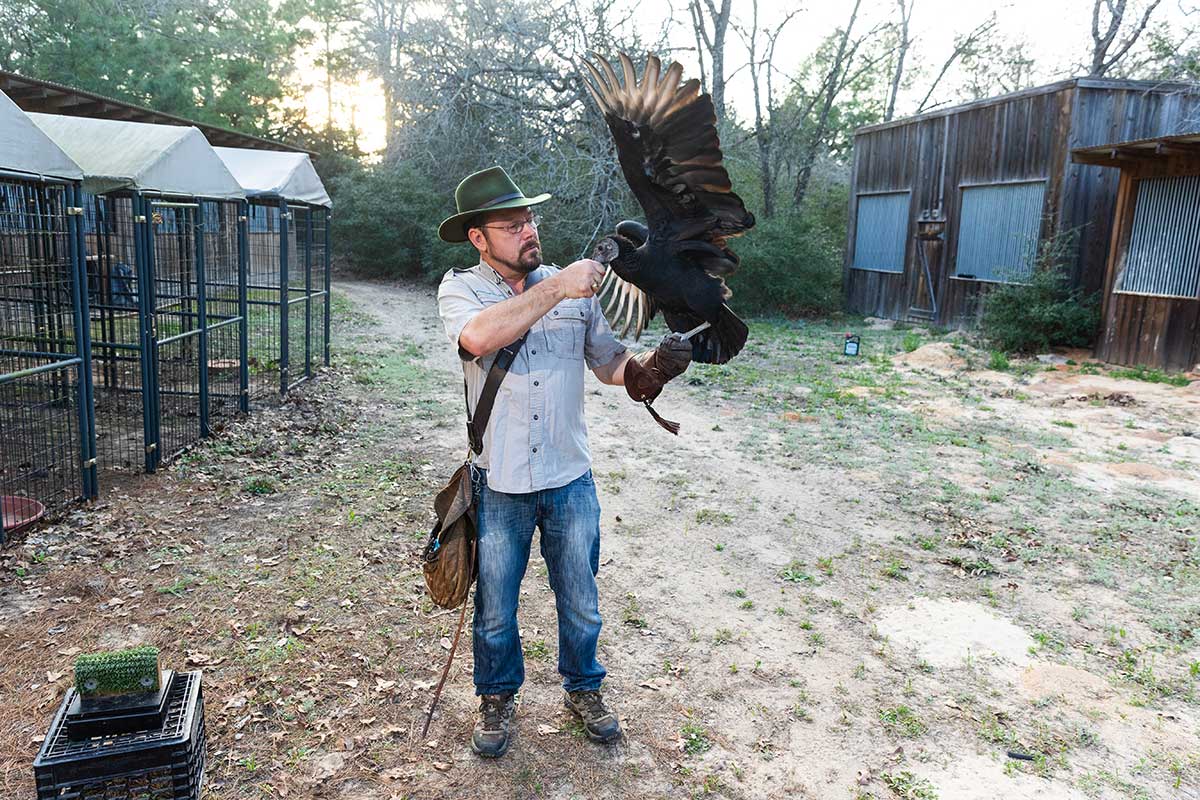
Gaines and Scurvy, a black vulture.
Erich Schlegel
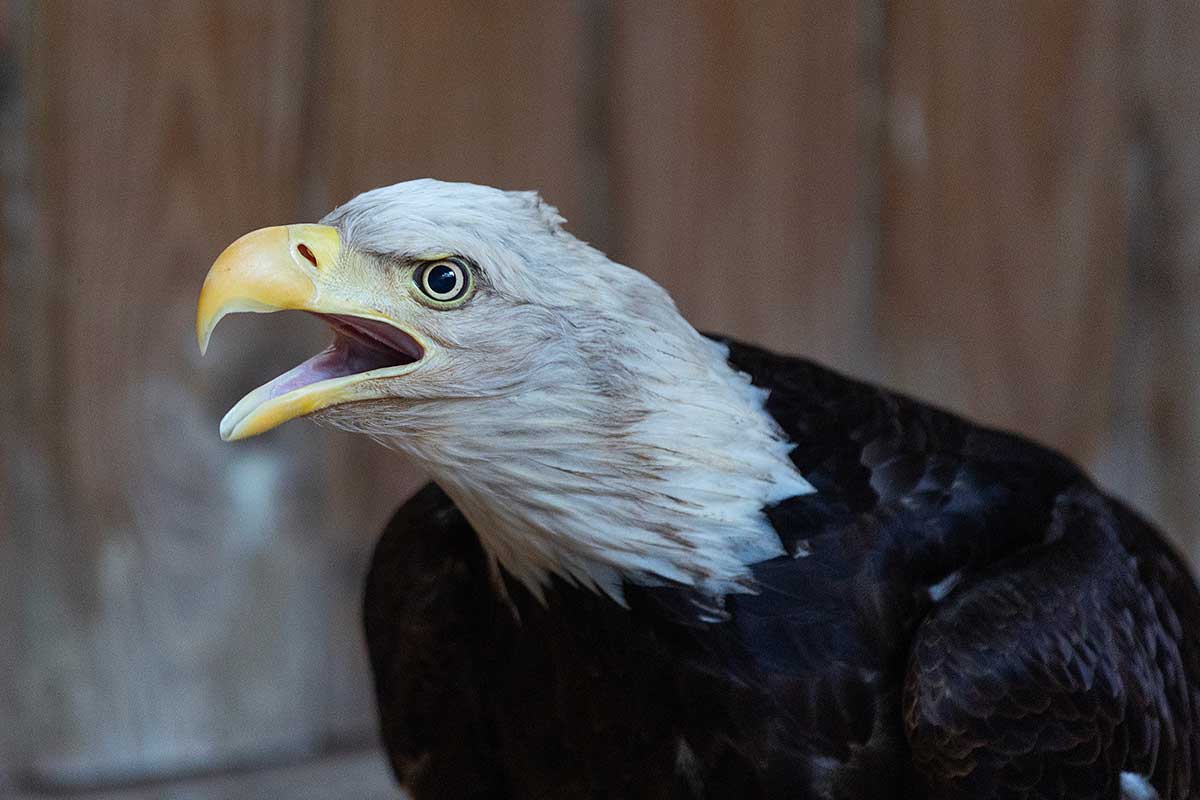
An injured bald eagle at Wildlife Revealed.
Erich Schlegel
